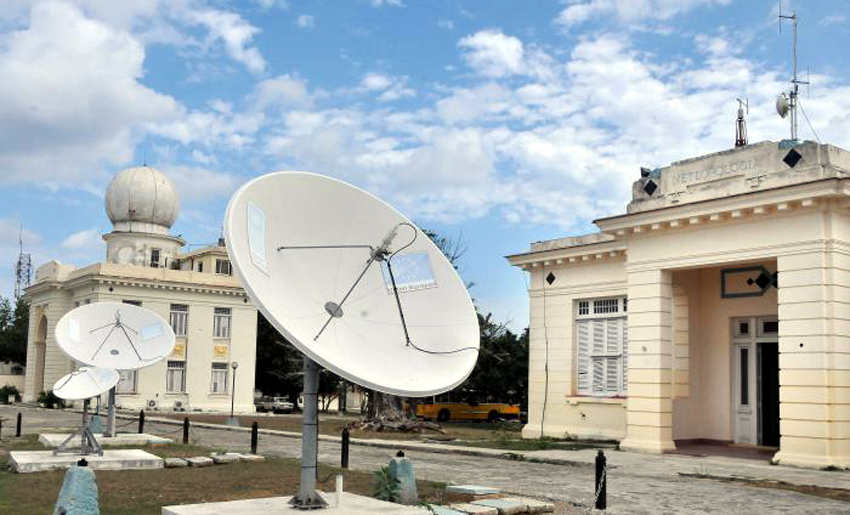The Cuban Institute of Meteorology (Insmet) marks this Sunday 60 years of decisive influence on the country’s socioeconomic development. Providing specialized, authoritative, reliable, and truthful information. Through its timely hydrometeorological alerts that prevent loss of life and mitigate material damage in the face of natural disasters.
Based in a facility of historical and scientific significance on Casablanca Hill, adjacent to Havana Bay, where the National Observatory has been located since 1908. It was officially established on October 12th, 1965, and has included visits from Commander-in-Chief Fidel Castro during extreme events during hurricane seasons. As well as during his appearances on Cuban television, members of its collective recall.
They emphasized its role in preparing weather forecasts, monitoring atmospheric pollution, studying solar radiation, extreme drought seasons. Also the occurrence of rain and storms, especially hurricanes that frequently occur in the Caribbean Sea.
Furthermore, its involvement in seasonal forecasting. A research project in its initial phase, consists of issuing six-month forecasts of rainfall and temperature patterns. For this purpose, it has 68 data recording and verification stations and a network of eight radars. All automated and at full capacity, thanks to the ingenuity of Cuban specialists.
This national system allows observations made in each territory to reach the headquarters in Casablanca and the provincial centers with immediacy, precision, and timeliness.
This means having the necessary information to prepare very short- and medium-term forecasts. Which, in the Caribbean region, only Cuba and Mexico produce. Its core area of work is dedicated to research and services, responsible for measuring, collecting, and processing climate and air pollution variables.
Operating monitoring systems; and conducting scientific investigations aimed at improving meteorological and climate prediction. Especially of phenomena that pose a danger to human life, material resources, and the national economy.
Its purely research-based sphere includes four national centers: Climate, Agrometeorology, Atmospheric Physics, and Air Pollution. While its services area encompasses Basic Systems, comprising Forecasting, Maritime Meteorology, Station Network Support, Infocommunications, and Radars. The latter is responsible for issuing weather reports and providing aggregated services to agriculture. The navy, aeronautics, and other industries.
From an international perspective, it establishes agreements with the World Meteorological Organization and other similar institutions that provide advice, information, and technology Exchange. Particularly with the Regional Hurricane Center, located in the United States.
However, the US government’s economic, commercial, and financial embargo, in place for more than 60 years, prevents the acquisition of parts and equipment in its market for the modernization of Cuban meteorological stations and access to cutting-edge technologies for receiving satellite images. Despite this, Insmet provides technical assistance to other nations.
Sixty years after Insmet was founded, Cuba has full sovereignty over scientific knowledge of the atmosphere and ocean in the Caribbean region, the Gulf of Mexico, and the North Atlantic Ocean.
The Institute is the guarantor of this knowledge. Its highest mission is to protect the lives of its citizens and the nation’s economic assets. As well as to contribute to the country’s sustainable development by providing tools from science.
- The National Assembly of People’s Power has convened its Sixth Ordinary Session - 27 de November de 2025
- Media Reports on Cuba’s New Economic Measures - 26 de November de 2025
- Cuban President Visits Mayari Municipality - 26 de November de 2025

